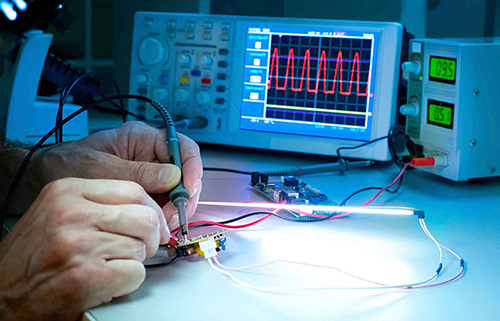Funding Innovation and Experimentation:
The Scientific Research and Experimental Development Tax Credit Program
Written by:
Matthew Wilson, Technical Writer.
Research and development is the backbone of innovation, and Canada is a world leader in funding for research and development. The Canadian federal government provides direct funding for R&D initiatives through a number of sector-specific or regional grants, and through the Scientific Research & Experimental Development (SR&ED) tax credit program. Taking advantage of multiple sources
of direct and indirect innovation funding by linking technical projects and business problems together can help your company secure significant capital. This edition of our newsletter will outline several programs which aim to support innovative projects.
While SR&ED tax credits for experimental development work can be a major source of funding for your business, many manufacturers may overlook their eligibility because they fail to see the innovation in their work. The SR&ED program provides up to 35% of qualified expenditures back as a tax refund or credit, and eligible expenditures include materials costs, contract expenditures, third-party payments, salaries, wages, overhead, and related costs. Three types of work qualify for SR&ED tax incentives: basic research, applied research, and experimental development; however, most SR&ED-eligible work done by businesses can be classified as Experimental Development. Experimental Development consists of work carried out to achieve technological advancement, and it is the kind of innovation that is often necessary to develop new products or processes or improve existing products or processes.
Innovation, and thus SR&ED-eligible work, can occur in unlikely places. One such place is the metalforming industry. While the industry has remained relatively stable over the past 40 years, metalformers consistently face challenges that require experimentation to overcome. Remaining a leader in any industry means continuing to expand production capabilities such as by introducing new alloys into production processes while increasing efficiencies and working to improve the quality of existing products. Although these activities themselves aren't SR&ED eligible, work done to overcome challenges that arise through these efforts do qualify for the program.
Material anisotropy is an example of an issue commonly faced by metalformers today. Many varieties of sheet metal react differently to stress applied in different directions, particularly higher-gauge or rolled material. These directional dependencies, called anisotropies, can lead to a number of product defects including cracks, material springback, and superficial bumps and dents. The unpredictable nature of anisotropy means that simply identifying the mechanical properties of a material can require extensive experimentation. Forming practices may also need to be modified to compensate for these deficiencies. Because these practices are non-routine procedures, costs for this work can be offset through SR&ED tax credits. As such, anisotropy acts as a useful initial flag for identifying when SR&ED activities begin.
No matter the industry, similar technological roadblocks provide clues as to where SR&ED-eligible work can be found. Recognizing the government funding potential of each project is essential to ensuring continued business growth and innovation.

